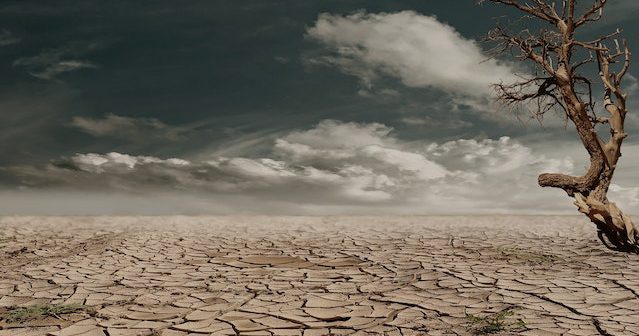The environment we exist in has a tremendous effect on our overall health. The naturally occurring conditions of the earth and human activity create an ever-changing climate that can lead to short- and long-term health risks. These risks can be direct, like heat stress and injuries from extreme weather events, and indirect, like the spread of vector-borne diseases. Some health risks are more prevalent in certain regions or among specific groups of people.
As we evolve and the climate changes, so do the risks of developing new health conditions and exacerbating pre-existing ones. We must consider current and future threats to pinpoint the most pressing health risks associated with climate change. Taking a preventative approach to climate change can help save lives and protect our health well into the future.
So, what are some common yet potentially deadly health risks associated with climate change?
Let’s take a look.
Severe Weather:
Hurricanes, floods, and other extreme weather events are becoming more frequent and intense due to climate change. While we fear our house’s foundation being washed away or losing power for days on end, these events also present genuine health risks.
In the US, nearly 71% of deaths from natural disasters are attributed to floods. Flash flooding can quickly overwhelm victims, leading to injuries or even death by drowning. Floodwaters can also contain dangerous debris, chemical contaminants, and pathogens that can cause serious illness.
These effects of climate change on human health are hazardous for young children, the elderly, and people with chronic health conditions.
In addition to the risk of drowning, extreme weather events can lead to injuries from falling trees or flying debris. According to the CDC, severe weather events resulted in nearly 13,000 deaths from 2006-2010.
Heat Stress:
As the average global temperature continues to rise, so does the risk for heat-related illnesses. Hotter temperatures lead to increased evaporation, which in turn causes drought and air pollution. These conditions make it difficult for the body to cool itself, leading to heat exhaustion, heat stroke, and even death. People most vulnerable to heat-related illness are those who work or exercise outdoors, young children, the elderly, and people with chronic health conditions. In the US, heat stress is responsible for an average of 13,000 deaths yearly.
Luckily, there are steps we can take to prevent heat-related illness. Staying hydrated, avoiding strenuous activity during the hottest hours of the day, and wearing loose, light-colored clothing can help keep our bodies cool.
Vector-Borne Diseases:
Climate change can lead to the spread of vector-borne diseases or illnesses that are transmitted by mosquitoes, ticks, and other insects. The leading cause of vector-borne disease in the US is Lyme disease, transmitted by black-legged ticks.
Lyme disease is a severe illness that can cause many symptoms, including fever, fatigue, and joint pain. If left untreated, it can lead to severe complications, including neurological problems and heart damage.
The risk for Lyme disease and other vector-borne illnesses is increasing as the climate changes. Warmer temperatures and changes in precipitation patterns provide ideal conditions for ticks and insects to thrive. As a result, we see an increase in the range and number of vector-borne diseases. Malaria, chikungunya, and Zika are just a few other vector-borne diseases rising in recent years.
Poor Air Quality:
We all sing praises of how the automotive industry has come so far, but what we don’t like to talk about is the air pollution that comes along with it. One-third of all the pollution in the US is due to automobiles. And according to the EPA, this pollution is responsible for over 17,000 deaths yearly.
Air pollution can cause various health problems, including respiratory infections, heart disease, and cancer. There isn’t a specified group of people who are more susceptible to the effects of air pollution, but some groups, such as children and the elderly, may be more vulnerable.
On the bright side, the industry is becoming more conscious of the effects of air pollution and is taking steps to reduce emissions. Electric cars are becoming more popular, and there are now many options for eco-friendly transportation. But, there’s still a long way to go to improve air quality.
Contaminated Water Supply:
Water is the naturally existing elixir of life, but what happens when it becomes contaminated? The water may be contaminated with bacteria, lead, and other harmful chemicals. According to the EPA, over 19 million people in the US get their water from private wells that are not regulated by the Safe Drinking Water Act.
When we consume contaminated water, whether through drinking, cooking, or bathing, we put ourselves at risk for a wide range of health problems. These include gastrointestinal illness, reproductive problems, and neurological disorders.
It’s essential to test your water regularly to ensure it is safe to drink. If you get your water from a private well, you should have it tested at least once a year. You can also install a water filtration system to remove contaminants from your water. A professional can help you choose the right system for your home.
Increase in Pollen and Other Allergens:
The blossoming of flowers in springtime is a beautiful sight. But for people with allergies, it starts a long and difficult season.
As soon as the pollen starts flying, people with allergies begin to suffer from symptoms like sneezing, coughing, and watery eyes. For some people, these symptoms are just a nuisance. But for others, they can be debilitating. Pollen is not the only allergen on the rise. Mold, dust mites, and pet dander are also becoming more prevalent. As the climate changes, we expect to see an increase in these allergens.
If you suffer from allergies, you can take steps to minimize your symptoms. These include staying indoors when the pollen count is high, taking allergy medication, and getting allergy shots. Meanwhile, wear a mask when you go outside, and shower as soon as you come in to remove pollen from your hair and skin. It’s best to consult with a specialist to find the best plan for you.
Conclusion:
Climate change is a complex issue with far-reaching consequences. It doesn’t only put us at risk for extreme weather events. It also poses a threat to our health and well-being.
We all have a role to play in protecting our planet and, eventually, our health, so it’s crucial to take steps to mitigate the effects of climate change for our sake and the sake of future generations. Some practical ways of doing so are by cutting down on emissions, conserving energy, and recycling.




